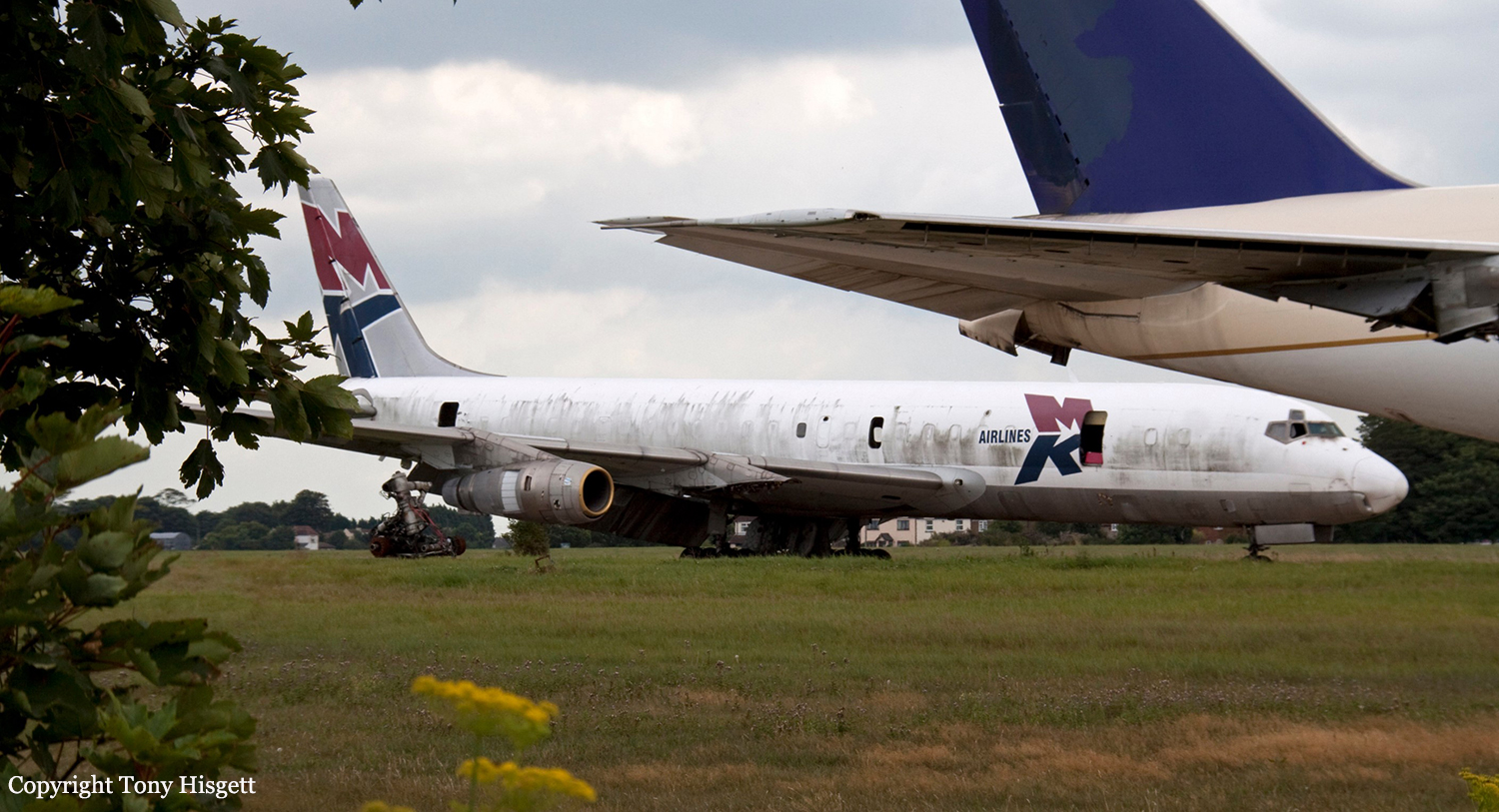Country
Operator Image

Crash of a Boeing 747-244BSF in Halifax: 7 killed
Date & Time:
Oct 14, 2004 at 0356 LT
Registration:
9G-MKJ
Survivors:
No
Schedule:
Windsor Locks - Halifax - Zaragoza
MSN:
22170
YOM:
1980
Flight number:
MKA1602
Crew on board:
7
Crew fatalities:
Pax on board:
0
Pax fatalities:
Other fatalities:
Total fatalities:
7
Aircraft flight hours:
80619
Aircraft flight cycles:
16368
Circumstances:
MKA1602 landed on Runway 24 at Halifax International Airport at 0512 and taxied to the ramp. After shutdown, loading of the aircraft was started. During the loading, two MK Airlines Limited crew members were observed sleeping in the upper deck passenger seats. After the fuelling was complete, the ground engineer checked the aircraft fuelling panel and signed the fuel ticket. The aircraft had been uploaded with 72 062 kg of fuel, for a total fuel load of 89 400 kg. The ground engineer then went to the main cargo deck to assist with the loading. Once the loading was complete, the ramp supervisor for the ground handling agent went to the upper deck to retrieve the MKA1602 cargo and flight documentation. While the loadmaster was completing the documentation, the ramp supervisor visited the cockpit and noted that the first officer was not in his seat. Approximately 10 minutes later, the ramp supervisor, with the documentation, left the aircraft. At 0647, the crew began taxiing the aircraft to position on Runway 24, and at 0653, the aircraft began its take-off roll. See Section 1.11.4 of this report for a detailed sequence of events for the take-off. During rotation, the aircraftís lower aft fuselage briefly contacted the runway. A few seconds later, the aircraftís lower aft fuselage contacted the runway again but with more force. The aircraft remained in contact with the runway and the ground to a point 825 feet beyond the end of the runway, where it became airborne and flew a distance of 325 feet. The lower aft fuselage then struck an earthen berm supporting an instrument landing system (ILS) localizer antenna. The aircraft's tail separated on impact, and the rest of the aircraft continued in the air for another 1200 feet before it struck terrain and burst into flames. The final impact was at latitude 44°52'51" N and longitude 063°30'31" W, approximately 2500 feet past the departure end of Runway 24, at an elevation of 403 feet above sea level (asl). The aircraft was destroyed by impact forces and post-crash fire. All persons on board (seven crew members) were fatally injured.
Probable cause:
Findings as to Causes and Contributing Factors:
1. The Bradley take-off weight was likely used to generate the Halifax take-off performance data, which resulted in incorrect V speeds and thrust setting being transcribed to the take-off data card.
2. The incorrect V speeds and thrust setting were too low to enable the aircraft to take off safely for the actual weight of the aircraft.
3. It is likely that the flight crew member who used the Boeing Laptop Tool (BLT) to generate take-off performance data did not recognize that the data were incorrect for the planned take-off weight in Halifax. It is most likely that the crew did not adhere to the operatorís procedures for an independent check of the take-off data card.
4. The pilots of MKA1602 did not carry out the gross error check in accordance with the company's standard operating procedures (SOPs), and the incorrect take-off performance data were not detected.
5. Crew fatigue likely increased the probability of error during calculation of the take-off performance data, and degraded the flight crewís ability to detect this error.
6. Crew fatigue, combined with the dark take-off environment, likely contributed to a loss of situational awareness during the take-off roll. Consequently, the crew did not recognize the inadequate take-off performance until the aircraft was beyond the point where the take-off could be safely conducted or safely abandoned.
7. The aircraftís lower aft fuselage struck a berm supporting a localizer antenna, resulting in the tail separating from the aircraft, rendering the aircraft uncontrollable.
8. The company did not have a formal training and testing program on the BLT, and it is likely that the user of the BLT in this occurrence was not fully conversant with the software.
Findings as to Risk:
1. Information concerning dangerous goods and the number of persons on board was not readily available, which could have jeopardized the safety of the rescue personnel and aircraft occupants.
2. Failure of one of the airport emergency power generators to provide backup power prevented the operation of some automatic functions at the fire hall after the crash alarm was activated, increasing the potential for a delayed response.
3. Grid map coordinates were not used to direct units responding to the crash and some responding units did not have copies of the grid map. The non-use of grid coordinates during an emergency could lead to confusion and increase response times.
4. Communication difficulties encountered by the emergency response agencies complicated coordination and could have hampered a rescue attempt or quick evacuation of an injured person.
5. A faulty aircraft cargo loading system prevented the proper positioning of a roll of steel, resulting in the weight limits of positions LR and MR being exceeded by 4678 kg (50 per cent).
6. The company increase of the maximum flight duty time for a heavy crew from 20 to 24 hours increased the potential for fatigue.
7. Regulatory oversight of MK Airlines Limited by the Ghana Civil Aviation Authority (GCAA) was not adequate to detect serious non-conformances to flight and duty times, nor ongoing non-adherence to company directions and procedures.
8. The delay in passing the new Civil Aviation Act, 2004 hindered the GCAAís ability to exercise effective oversight of MK Airlines Limited.
9. Company planning and execution of very long flight crew duty periods substantially increased the potential for fatigue.
10. The company expansion, flight crew turnover, and the MK Airlines Limited recruitment policy resulted in a shortage of flight crew; consequently, fewer crews were available to meet operational demands, increasing stress and the potential for fatigue.
11. There were no regulations or company rules governing maximum duty periods for loadmasters and ground engineers, resulting in increased potential for fatigue-induced errors.
12. The MK Airlines Limited flight operations quality and flight safety program was in the early stages of development at the time of the accident; consequently, it had limited effectiveness.
13. The berms located at either end of runways 06 and 24 were not evaluated as to whether they were a hazard to aircraft in the runway overrun/undershoot areas.
14. The operating empty weight of the aircraft did not include 1120 kg of personnel and equipment; consequently, it was possible that the maximum allowable aircraft weights could be exceeded unknowingly.
15. The ground handling agent at Halifax International Airport did not have the facilities to weigh built-up pallets that were provided by others. Incorrect load weights could result in adverse aircraft performance.
16. Some MK Airlines Limited flight crew members did not adhere to all company SOPs; company and regulatory oversight did not address this deficiency.
Other Findings:
1. An incorrect slope for Runway 24 was published in error and not detected; the effect of this discrepancy was not a significant factor in the operation of MKA1602 at Halifax.
2. The occurrence aircraft was within the weight and centre of gravity limits for the occurrence flight, although the allowable cargo weights on positions LR and MR were exceeded.
3. Based on engineering simulation, the accident aircraft performance was consistent with that expected for the configuration, weight and conditions for the attempted take-off at Halifax International Airport.
4. There have been several examples of incidents and accidents worldwide where non-adherence to procedures has led to incorrect take-off data being used, and the associated flight crews have not recognized the inadequate take-off performance. 5. No technical fault was found with the aircraft or engines that would have contributed to the accident.
1. The Bradley take-off weight was likely used to generate the Halifax take-off performance data, which resulted in incorrect V speeds and thrust setting being transcribed to the take-off data card.
2. The incorrect V speeds and thrust setting were too low to enable the aircraft to take off safely for the actual weight of the aircraft.
3. It is likely that the flight crew member who used the Boeing Laptop Tool (BLT) to generate take-off performance data did not recognize that the data were incorrect for the planned take-off weight in Halifax. It is most likely that the crew did not adhere to the operatorís procedures for an independent check of the take-off data card.
4. The pilots of MKA1602 did not carry out the gross error check in accordance with the company's standard operating procedures (SOPs), and the incorrect take-off performance data were not detected.
5. Crew fatigue likely increased the probability of error during calculation of the take-off performance data, and degraded the flight crewís ability to detect this error.
6. Crew fatigue, combined with the dark take-off environment, likely contributed to a loss of situational awareness during the take-off roll. Consequently, the crew did not recognize the inadequate take-off performance until the aircraft was beyond the point where the take-off could be safely conducted or safely abandoned.
7. The aircraftís lower aft fuselage struck a berm supporting a localizer antenna, resulting in the tail separating from the aircraft, rendering the aircraft uncontrollable.
8. The company did not have a formal training and testing program on the BLT, and it is likely that the user of the BLT in this occurrence was not fully conversant with the software.
Findings as to Risk:
1. Information concerning dangerous goods and the number of persons on board was not readily available, which could have jeopardized the safety of the rescue personnel and aircraft occupants.
2. Failure of one of the airport emergency power generators to provide backup power prevented the operation of some automatic functions at the fire hall after the crash alarm was activated, increasing the potential for a delayed response.
3. Grid map coordinates were not used to direct units responding to the crash and some responding units did not have copies of the grid map. The non-use of grid coordinates during an emergency could lead to confusion and increase response times.
4. Communication difficulties encountered by the emergency response agencies complicated coordination and could have hampered a rescue attempt or quick evacuation of an injured person.
5. A faulty aircraft cargo loading system prevented the proper positioning of a roll of steel, resulting in the weight limits of positions LR and MR being exceeded by 4678 kg (50 per cent).
6. The company increase of the maximum flight duty time for a heavy crew from 20 to 24 hours increased the potential for fatigue.
7. Regulatory oversight of MK Airlines Limited by the Ghana Civil Aviation Authority (GCAA) was not adequate to detect serious non-conformances to flight and duty times, nor ongoing non-adherence to company directions and procedures.
8. The delay in passing the new Civil Aviation Act, 2004 hindered the GCAAís ability to exercise effective oversight of MK Airlines Limited.
9. Company planning and execution of very long flight crew duty periods substantially increased the potential for fatigue.
10. The company expansion, flight crew turnover, and the MK Airlines Limited recruitment policy resulted in a shortage of flight crew; consequently, fewer crews were available to meet operational demands, increasing stress and the potential for fatigue.
11. There were no regulations or company rules governing maximum duty periods for loadmasters and ground engineers, resulting in increased potential for fatigue-induced errors.
12. The MK Airlines Limited flight operations quality and flight safety program was in the early stages of development at the time of the accident; consequently, it had limited effectiveness.
13. The berms located at either end of runways 06 and 24 were not evaluated as to whether they were a hazard to aircraft in the runway overrun/undershoot areas.
14. The operating empty weight of the aircraft did not include 1120 kg of personnel and equipment; consequently, it was possible that the maximum allowable aircraft weights could be exceeded unknowingly.
15. The ground handling agent at Halifax International Airport did not have the facilities to weigh built-up pallets that were provided by others. Incorrect load weights could result in adverse aircraft performance.
16. Some MK Airlines Limited flight crew members did not adhere to all company SOPs; company and regulatory oversight did not address this deficiency.
Other Findings:
1. An incorrect slope for Runway 24 was published in error and not detected; the effect of this discrepancy was not a significant factor in the operation of MKA1602 at Halifax.
2. The occurrence aircraft was within the weight and centre of gravity limits for the occurrence flight, although the allowable cargo weights on positions LR and MR were exceeded.
3. Based on engineering simulation, the accident aircraft performance was consistent with that expected for the configuration, weight and conditions for the attempted take-off at Halifax International Airport.
4. There have been several examples of incidents and accidents worldwide where non-adherence to procedures has led to incorrect take-off data being used, and the associated flight crews have not recognized the inadequate take-off performance. 5. No technical fault was found with the aircraft or engines that would have contributed to the accident.
Final Report:
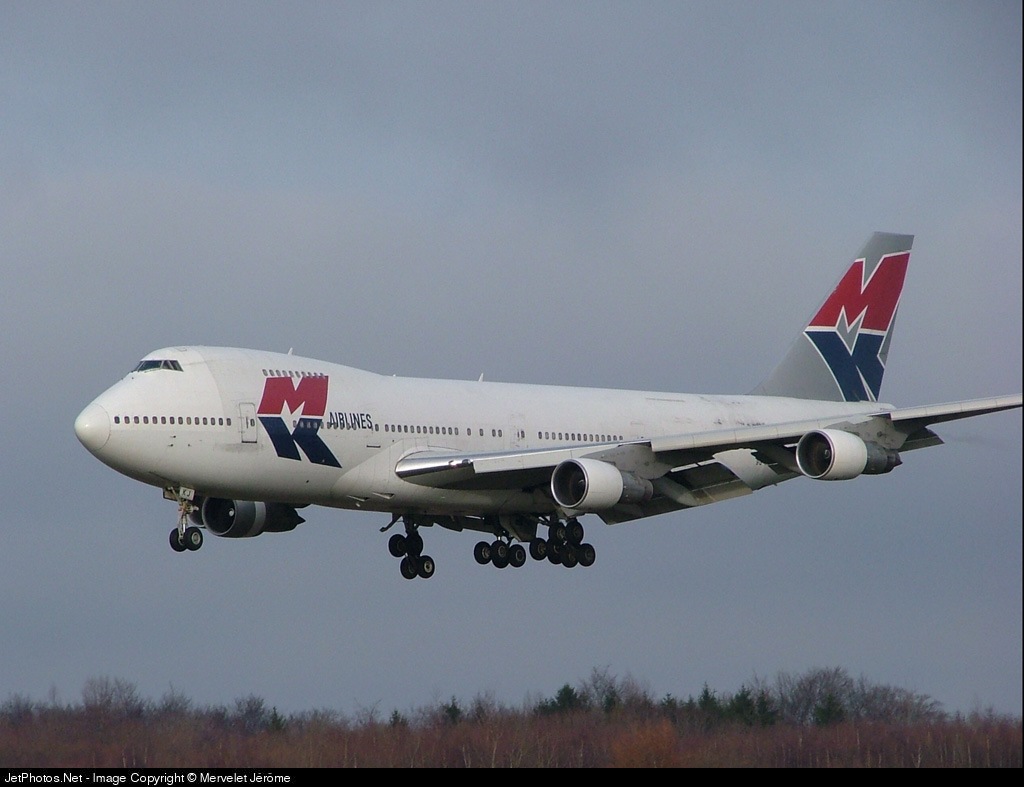
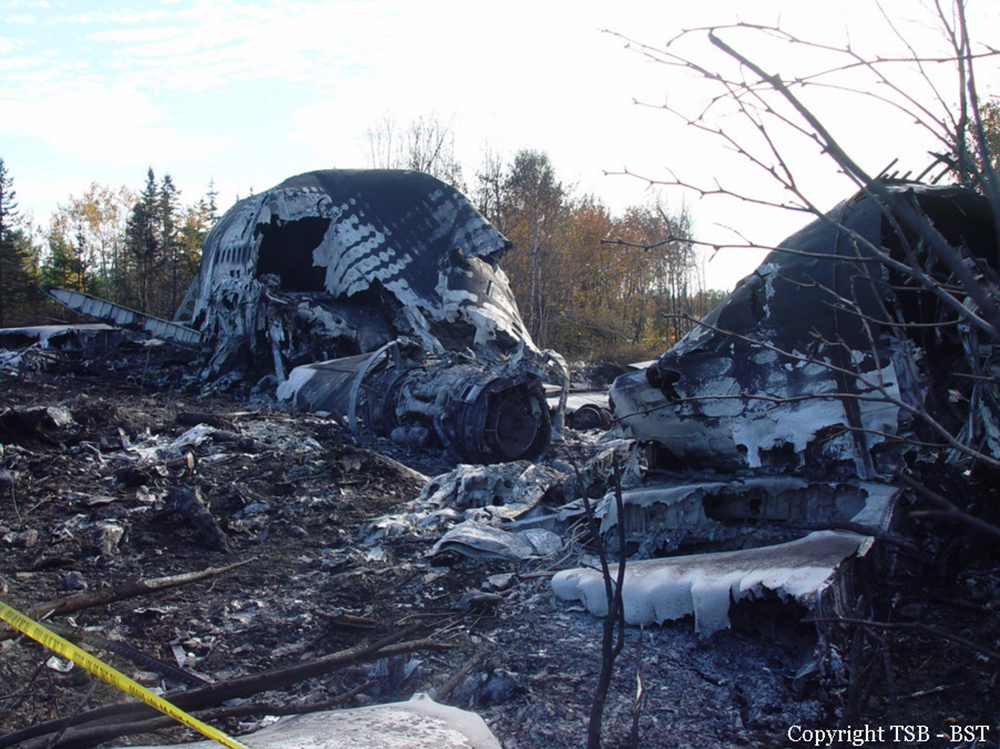
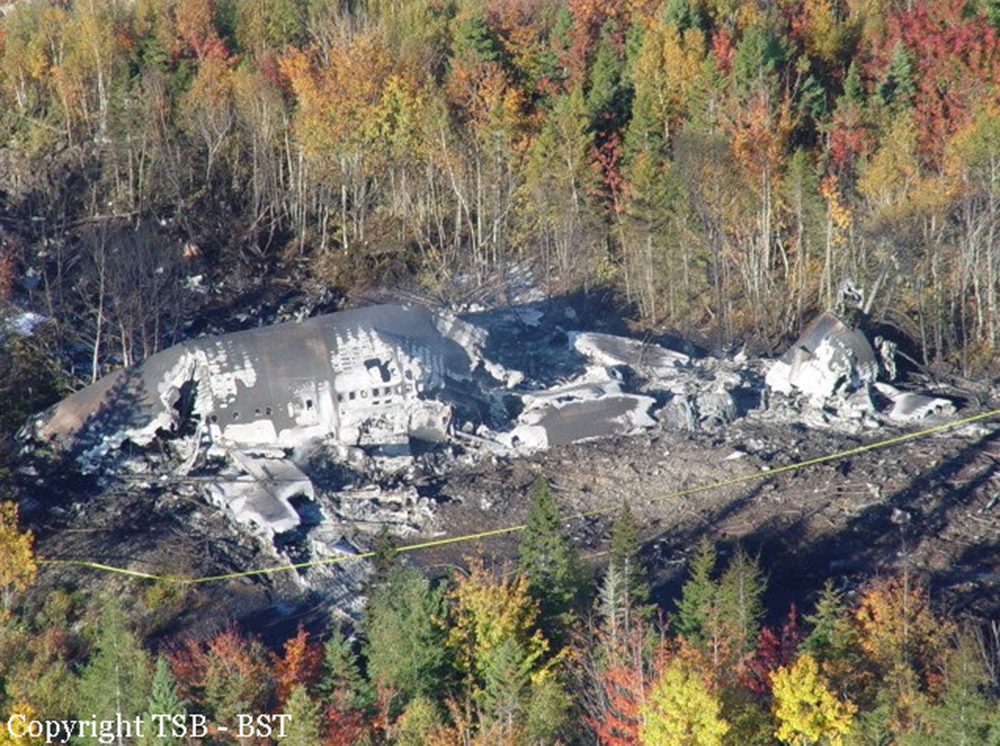
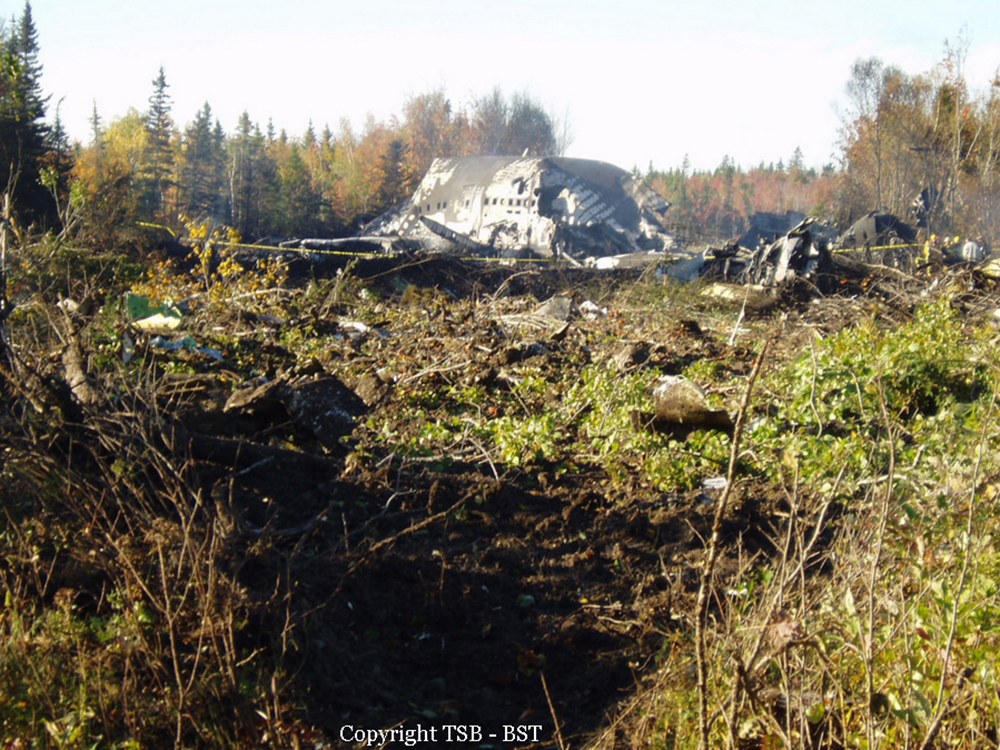
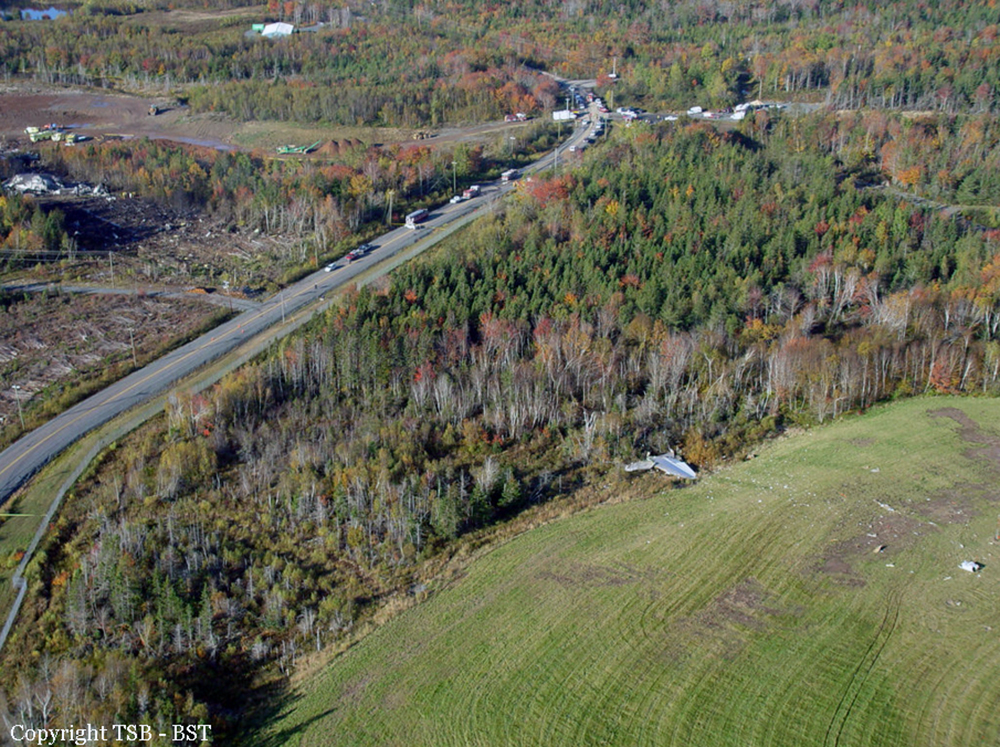
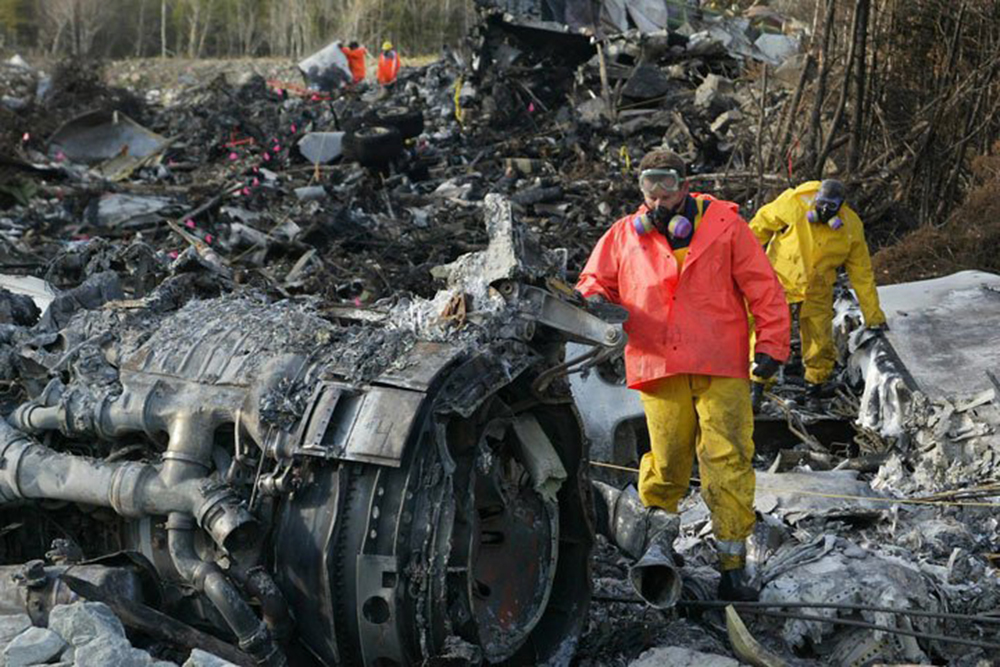
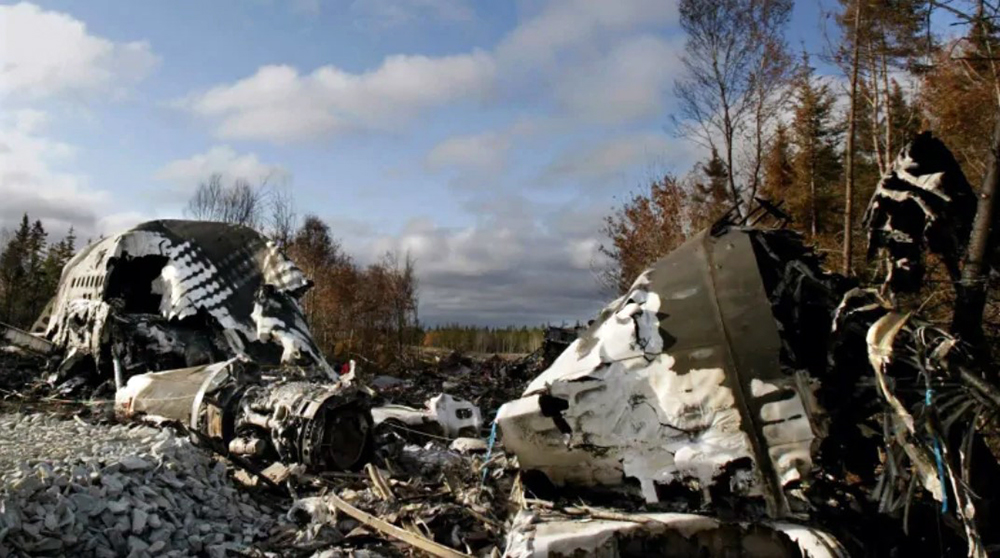
Crash of a Boeing 747-246F in Port Harcourt: 1 killed
Date & Time:
Nov 27, 2001 at 0156 LT
Registration:
9G-MKI
Survivors:
Yes
Schedule:
Luxembourg – Port Harcourt – Johannesburg
MSN:
22063
YOM:
1980
Crew on board:
4
Crew fatalities:
Pax on board:
9
Pax fatalities:
Other fatalities:
Total fatalities:
1
Aircraft flight hours:
80500
Aircraft flight cycles:
17600
Circumstances:
The aircraft departed Luxembourg-Findel Airport on a cargo flight to Johannesburg with an intermediate stop in Port Harcourt, carrying nine passengers, four crew members and a load consisting of almost 60 tons of electronics. On a night approach to Port Harcourt Airport, the copilot who was the pilot-in-command failed to comply with the company published procedures and carried a non-standard autopilot approach, tracking a localizer radial inbound and descending using the vertical speed mode as reference. On short final, the crew failed to realize his altitude was insufficient when the aircraft struck the ground 700 metres short of runway. The undercarriage was torn off and the aircraft slid for few dozen metres before coming to rest with its front section that broke away, bursting into flames. A crew member was killed, seven occupants were injured and five escaped uninjured. The aircraft was partially destroyed by fire.
Probable cause:
Wrong approach configuration on part of the flying crew which resulted in a controlled flight into terrain after the crew failed to comply with several published procedures. It was determined that the copilot was the pilot-in-command while the operator policy stipulated that approached to Port Harcourt must be completed by captain only. The following findings were identified:
- It was defined in the operational procedures that the autopilot could not be used below the altitude of 2,000 feet on approach but the copilot failed to comply with,
- Poor crew coordination,
- There were no calls on final approach between both flying and non flying pilots,
- The crew suffered a lack of situational awareness following a misinterpretation of the visual references on approach.
- It was defined in the operational procedures that the autopilot could not be used below the altitude of 2,000 feet on approach but the copilot failed to comply with,
- Poor crew coordination,
- There were no calls on final approach between both flying and non flying pilots,
- The crew suffered a lack of situational awareness following a misinterpretation of the visual references on approach.
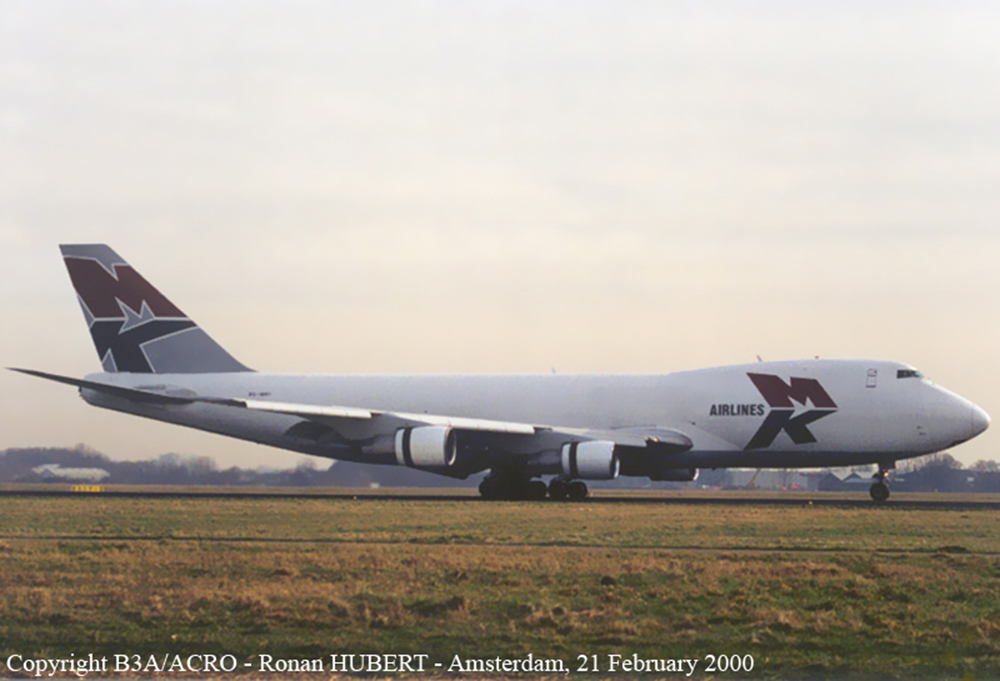
Crash of a Douglas DC-8-55F in Port Harcourt
Date & Time:
Dec 17, 1996 at 0500 LT
Registration:
9G-MKD
Survivors:
Yes
Schedule:
Luxembourg - Port Harcourt
MSN:
45965
YOM:
1968
Crew on board:
4
Crew fatalities:
Pax on board:
0
Pax fatalities:
Other fatalities:
Total fatalities:
0
Circumstances:
While descending to Port Harcourt Airport, the pilot-in-command established a visual contact with the runway lights at an altitude of 2,500 feet. The approach was continued when few seconds later, while the crew was thinking his altitude was 390 feet, the aircraft collided with trees. The captain decided to initiate a go-around procedure but all four engines failed to respond properly. The aircraft continued to descend and struck the ground 250 metres short of runway threshold. Upon impact, the undercarriage were torn off and the aircraft slid for few dozen metres before coming to rest. All four crew members escaped uninjured and the aircraft was damaged beyond repair. It was reported that the aircraft was unstable on final approach.
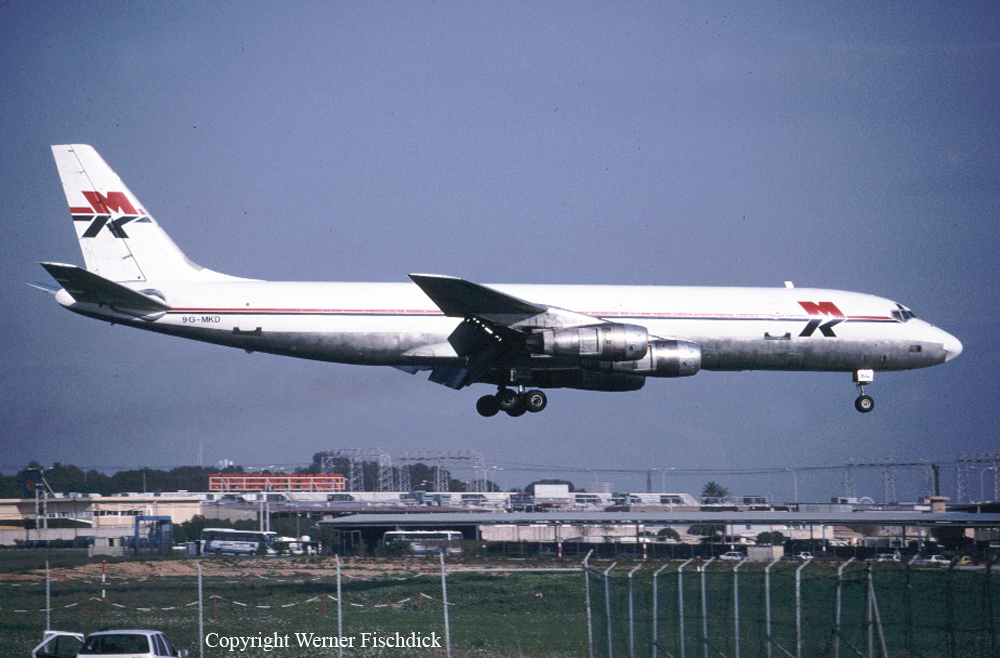
Crash of a Douglas DC-8-54F in Kano
Date & Time:
Feb 15, 1992
Registration:
9G-MKB
Survivors:
Yes
Schedule:
Ostende - Kano
MSN:
45860
YOM:
1966
Crew on board:
5
Crew fatalities:
Pax on board:
0
Pax fatalities:
Other fatalities:
Total fatalities:
0
Circumstances:
On approach to Kano Airport, while in a flat attitude about 8 km from the runway threshold, the crew lowered the flaps when the aircraft lost height and struck trees. It descended into the ground, lost its undercarriage and slid for 150 metres before coming to rest, bursting into flames against trees. All five crew members escaped uninjured while the aircraft was damaged beyond repair.
